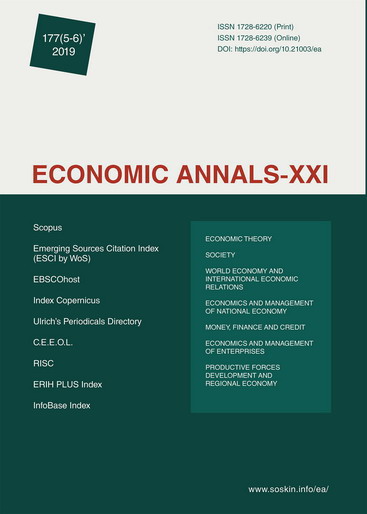Cluster approach to banking supervision with reference to bank risk profile
Cluster approach to banking supervision with reference to bank risk profile
Author(s): Victoria Kovalenko, Ludmila Kuznetsova, Elena Sergeeva, Nataliia Todorova, Olga Mylashko, Juraj TejSubject(s): Financial Markets
Published by: Institute of Society Transformation
Keywords: Banking Supervision; Cluster Approach; Bank Risk Profile; Ownership Structure;
Summary/Abstract: Introduction. The result of the global financial crisis is the process of transformation of banking supervision aimed at increasing the efficiency of banking risk management and improving mechanisms for dealing with various risk factors. The transformation of the banking surveillance system in the global aspect has defined a set of measures which are constantly monitored by international regulators. The improvement the supervisory methodology is mainly governed by the recommendations of the Basel Committee on Banking Supervision and currently involves introduction of new standards and approaches to regulating and supervising banks based on risk diversification, development of regulations and prompt application of measures to influence banks activities in case of excessive risk build up and increasing threats to the realization of systemic risk, implementation of internal control recommendations at banks aimed at identifying and minimizing the aggregate level of their risk, improvement of analytical rules and procedures and agreeing on intra-bank risk assessment techniques. Purpose. This paper presents the results of the possibility of using the cluster approach in the process of investigating the relationship between the ownership structure and risk profile of Ukrainian banks and, on this basis, improving their supervision.Methods. While assessing the financial condition of Ukrainian banks, the authors used statistical monitoring and cluster analysis. Results. The results of the study show that cluster analysis in banking supervision, depending on the ownership of banks, allows to determine the scale of the impact of crisis factors, identify the ways and methods of crisis management, as well as measures to overcome the future crisis with the least losses. It is proved that by means of cluster analysis, the regulator is able to group banks according to the similar business models and risk profiles. The criterion for including banks with different as to their size assets within a definite supervisory cluster is the same ownership structure. The analysis of 77 Ukrainian banks operating on the 1 January 2019 shows that, by the form of ownership, the banks of the 1st and 2nd groups can be distinguished as state-owned banks, large private banks and banks with foreign capital. By the character of operations they fall into risky (7 banks), schematic (4 banks), inactive (7 banks), captive (6 banks) and market banks (20 banks). The authors identify the groups of indicators that characterize bank risk profile, namely by counterparties, by instruments and by currencies. The study proposes an algorithm of bank clustering according to risk profile, which includes five stages: formation of data array, elimination of statistical units that generate extremes, normalization of the data array, analytical operations based on neural networks, formation of clusters and development of diversified modes of supervision. A strong correlation between the ownership structure and the risk profile in the Ukrainian banking system is proved. Conclusions. The analysis shows that ownership is not the only factor affecting a bank business model. Further stages of qualitative transformation of the banking supervision system in Ukraine should be aimed at specifying the regimes of control over the activities of financial intermediaries based on their risk profile according to the proposed methodology.
Journal: Економічний часопис - ХХІ
- Issue Year: 177/2019
- Issue No: 05+06
- Page Range: 82-91
- Page Count: 10
- Language: English

